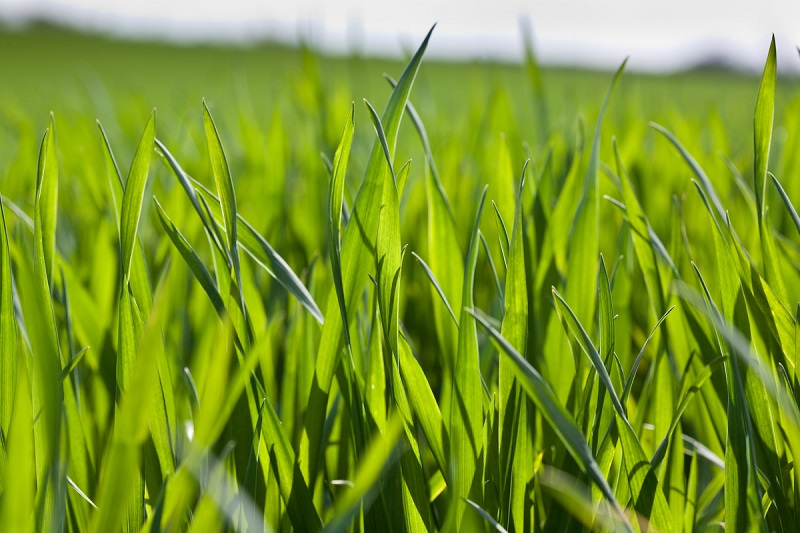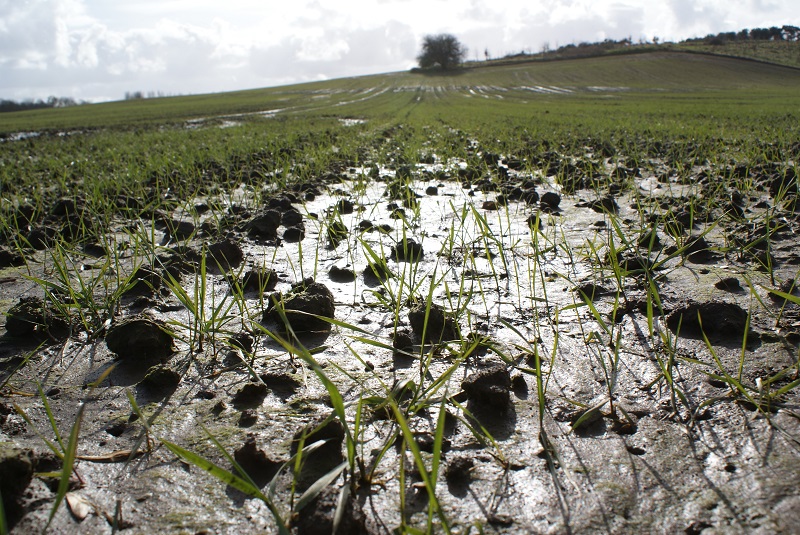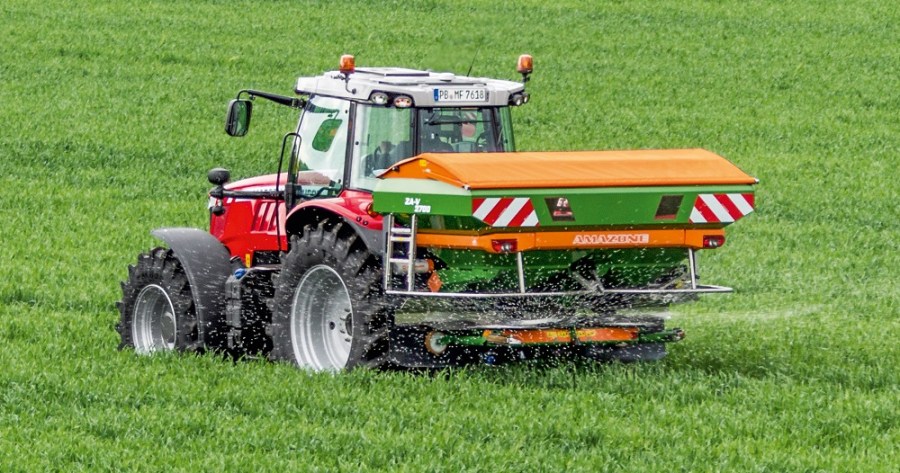The nutrient bible, RB209, is a must-have in any farm office. CPM gets an insight on the key changes on N-management and how growers can utilise them.
The change enables growers to have confidence while making N adjustments.
By Lucy de la Pasture
The new AHDB Nutrient Management Guide (RB209), due to be published in May, is the result of a comprehensive data review from scientific literature, publicly funded projects and commercial data.
The main aim of the project was to review all the crop nutrition research that had been carried out since 2009 for the key arable and grassland crops of England, Wales and Northern Ireland. The review also provided a foundation to revise the current RB209 (8th edition), explains Dr Sajjad Awan, resource management scientist at AHDB Cereals and Oilseeds.

There’s scope to push crops with a high yield potential without exceeding N-Max limits.
One of the major challenges was dealing with the quantity of data we had to work with, says Dr Pete Berry of RSK ADAS, who’s been at the forefront of the review process.
“For winter wheat, we looked at 700 N responses from field trials in the UK and an additional 507 trial sites from Denmark to validate the UK data trends. To compare the data, it was all reanalysed to be sure that we were assessing the data sets on a consistent basis,” he comments.
“For growers producing winter wheat at above average levels, there has been no clear guidance on how much they can push N-rates or for poorer areas of land, how much to reduce them by. The results of this review address these needs,” he adds.
In all the experiments assessed, the researchers found a positive correlation between higher crop yield and optimum N application.
“We found that RB209 underestimates the N requirement on potentially high yielding sites. So headlining the changes to RB209 is new guidance on adjusting N applications according to expected yield,” elaborates Pete Berry.

Judging expected yield means taking limiting factors into account and adjusting N downwards if necessary.
“The change has been based on UK data, which has now been distilled into added guidance which enables growers to have confidence while making N adjustments, up or down, depending on the yield they expect to achieve on any crop.
“The revised publication suggests N should be adjusted (up or down) by 20kg/ha/ t (increase or decrease) if the expected yield is over or under a reference yield of 8t/ha in winter wheat, 6.5t/ha in winter feed barley and 5.5t/ha in spring barley,” he explains.
The recommended additional 20kgN/ha is unlikely to be enough in its own right to provide sufficient N associated with a one tonne yield increase due to less than perfect uptake efficiency of fertiliser, so how will the adjustment figure work?
“The adjustment figure is a step in the right direction towards more precise N-application by putting some science behind the quantities being recommended over and above the old RB209 guidance. Interestingly, it’s only part of the crop requirement because we’re expecting these higher yield potential crops to be more efficient at extracting N from the soil, possibly due to a better rooting system,” he says.
The revisions take the view that, with an aim to fertilise for a realistic expectation of yield, it’s possible to push the boundaries without exceeding N-max limits – as long as it’s possible to justify the rationale behind the increase.
Getting to grips with estimating expected yield with confidence is a perennial problem for growers and Sajjad Awan recommends using historic yield data as a guide and justification of any increase or decrease in N.
Once the farm’s historic data has been analysed, any adjustments for expected yield are based around the reference yields for each crop. N adjustment can continue to be made up to expected yields of 13t/ha in winter wheat, 11t/ha in winter feed barley and 9t/ha in spring barley, he advises.
Looking at grain nitrogen is another way of discovering whether a crop has historically been under-fertilised, adds Pete Berry.
“In feed wheat, an 11% protein content equates to 1.9% grain N and for milling wheat, 12% protein is 2.1% grain N. The guidance given is that if your protein content is 0.5% below these thresholds, it’s indicative of under-fertilisation and increasing applied N by 25kg/ha can be justified,” he advises.
“In barley, the number of shoots in the spring is the key determinant of yield potential. So a barley crop in the spring with a high number of tillers is likely to have a higher expected yield than a poorly tillered crop,” adds Pete Berry.
But one of the most important aspects in the new guidance is that N-rates must be adjusted down too where poorer yields are expected, highlights Pete Berry.
Judging limiting factors and consequent low yield potential means factoring in components such as weed populations, disease level, sub-optimal plant populations, spring drought and late-sowing date, which can all have a negative impact on yield.
Small tweaks to the N tables in RB209 have been made for all cereal crops, except rye and spring wheat where data was too limited to assess.
“Notable changes have been to winter oats, where N rates have been increased by 40kg/ha and triticale, which now has the same N rates as for wheat with the proviso that they be reduced in certain circumstances.”
Expanding on the changes, Pete Berry explains for winter wheat and winter barley, small increases have been made to correct the old guidelines on some soil textures, primarily for light sands and silts where the review revealed application rates were being under-estimated. In contrast, the rates for spring malting barley growing in mineral soils has been revised downwards.
Previous RB209 guidance on nitrogen for barley consisted of tables for feed and malting barley at 1.8% grain N. The revised guide better reflects the range of market specs malting barley is now grown to and provides advice on how to achieve grain N from 1.5-1.8%.
“It’s an important development given the wide range of target specs, but also the increase in spring barley popularity means some growers are new to the crop. They don’t have a wealth of previous experience to draw on when it comes to adjusting their N to achieve a malting sample that differs from the old RB209 guidelines for 1.8% grain N.”
The new guidelines for spring barley at 1.7% grain N suggest a reduction in N of 30kg/ha, with a further reduction of the same amount to achieve 1.6% grain N.
Another revision to winter barley N application has been made to bring the fertiliser guidelines bang up to date with current thinking, explains Pete Berry.
“The timing recommendations for winter barley have been changed to reflect the contribution of tiller number to final yield – more tillers and higher ear numbers increase yield potential. The change is based on the results of a three-year AHDB-funded project which produced conclusive evidence that the new timing recommendations increase yield by 0.3t/ha over the current RB209 timings,” he comments.
Where less than 100kgN/ha is applied, a single dressing by GS30-31 is advised. For crops receiving 100-200kgN/ha, half should be put on during late-tillering (mid-Feb/early Mar) and the rest at GS30-31. Where N exceeds 200kg/ha, the recommendation is to apply a three-way split of 40% during late tillering, 40% at GS30-31 and 20% at GS32.
N-timing recommendations in OSR have been updated to reflect the canopy management practices that growers are already practicing, adds Pete Berry.
Perhaps of as much interest as the changes to fertiliser guidance are the gaps in knowledge that the review has highlighted.
“There’s a general lack of information on all spring cropping,” he points out. “We’ve an expanding area of spring barley but have a lack of data on timing and optimum rates. AHDB are currently in the process of commissioning a new three-year research project on nutrient management in spring barley to help bridge this gap.”
Access to the RB209 information will also be different. As well as hard copies of the new Guide (first available at Grassland & Muck on 24th-25th May), electronic versions will dovetail with farm software and will be downloadable in sections, so you can just access the crops you grow, adds Sajjad Awan.
How to utilise expected yield recommendations
For similarly performing parts of the farm
- Use RB209 to calculate your crop’s estimated total N requirement (prior to yield adjustment)
- Take your crop’s yield data for the past five years. Remove data for any unusually high- or low-yielding years and use what’s left to calculate the average yield (t/ha)
- Work out how many tonnes over (or under) the reference yield* your average yield is. For every tonne above, add 20kg/ha to (or for every tonne below, deduct 20kg/ha from) your crop’s estimated total N requirement
- In spring, assess how the season could impact on your crop’s yield potential (compared to the average yield, identified in Step 2)
- Decrease (or increase) your final N application(s) in response to your crop’s estimated yield potential
- Harvest your crop and learn from the current season’s experience to improve your nitrogen planning in subsequent years
*Reference yields are 8t/ha for winter wheat, 6.5t/ha winter feed barley and 5.5t/ha in spring barley. The adjustment can be made for expected yields of up to 13t/ha for winter wheat, 11t/ha for winter feed barley and 9t/ha for spring barley.
RB209 an invaluable tool
Well known Oxon grower, James Price, has been actively involved in the proposed changes to RB209 through his role on the board of AHDB Cereals and Oilseeds. He identifies nitrogen fertiliser as one of the most expensive inputs on his 648ha arable farm, especially as the value of the pound fluctuates, so it needs to be used efficiently.
“We’re all working much harder at N management and there have been a lot of changes in farming practices over the past 5-6 years as we try to find ways to stay profitable,” he says, highlighting the increase in popularity of cover crops, precision equipment and slow-release fertilisers as examples.
“We’re all pushing yields and to me, the result of the review has confirmed that, as long as we don’t exceed N-max and can fully justify what we’re doing, then it’s okay to put on more N,” he says.
At Perdiswell Farm, James Price has been using N-sensor technology for the past 10 years and tends to apply his N in four splits, using RB209 as his basic guide.




